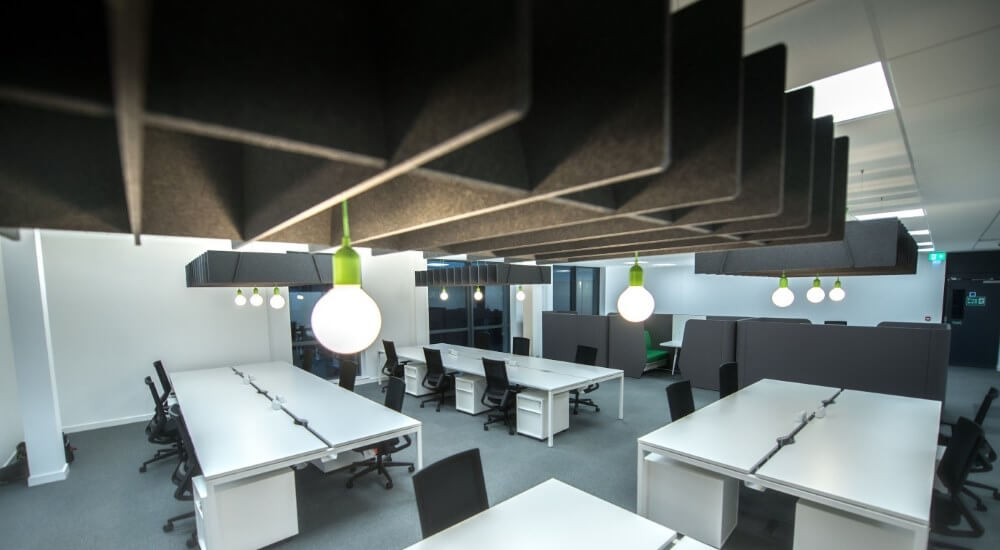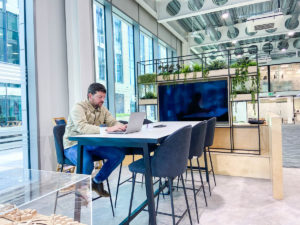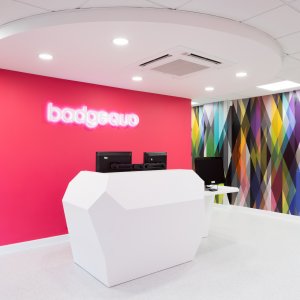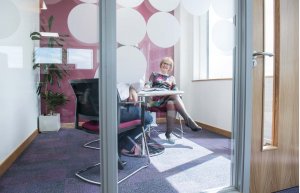
9 steps towards successful hybrid working
In this article we look at 9 areas that companies should focus on to ensure they successfully implement a hybrid working strategy.
COVID-19 has turned the world upside down, upending modern working life in a way never before experienced. The virus has forced many businesses from their offices to their homes, leading to much speculation surrounding what will become of the workplaces that currently remain empty and silent.
The challenge for businesses returning to work after lockdown lies in adapting workplaces for the post-pandemic world. Minimising the chance of virus transmission is now top priority for many organisations, alongside future-proofing their office spaces in the case of a similar event.
With this in mind, when returning to work after lockdown, what will the office space look like?
We’ve outlined the key agile design trends we predict will begin to appear in offices across the country after COVID-19, to give you a clearer picture of what the post-pandemic office might look like.
Arguably, one of the biggest challenges businesses will be facing in the aftermath of COVID-19 is enforcing social distancing measures. As humans, we’re not only naturally sociable, but creatures of habit, and become notoriously difficult when something threatens our normal way of life. Social distancing, or staying 2m apart, does exactly this – which is why businesses need to find clever ways to enforce social distancing without making their offices feel clinical, or their employees uncomfortable. That’s where design comes in.
It’s likely that human-centric design will be used to enforce social distancing; by which we mean signs, posters and other graphics. This is something that we’ve seen already, in public areas such as supermarkets where floor tiles have been used to indicate where people should stand in order to remain 2m apart. This example shows how floor stickers can be used effectively; to “nudge” people in the right direction – without feeling forceful or demanding.
Finding this balance between allowing people to move freely while simultaneously restricting their movement will be a challenge, but is absolutely necessary to enforce social distancing in the workplace.
Hygiene will undoubtedly be one of the dominant forces driving office design after COVID-19 – so much so that 94% of business leaders we asked believed that hygiene and cleanliness in the office environment would be extremely important. In that same report, 93% of these business leaders also stated they would deep clean the office before staff return to the workplace – suggesting that almost all businesses will place emphasis on cleanliness and hygiene moving forward.
With this in mind, it’s very likely that regular office design will take inspiration from healthcare. We can expect to see items in offices that would have historically been out of place, such as handwashing stations, antimicrobial surfaces and furniture, as well as more copper fixtures (since research shows that copper-containing metals like brass have antibacterial properties), and even anti-microbial paint.
A main concern with this heavy focus on hygiene is that offices risk becoming too clinical, and therefore uninviting, which can have a detrimental impact on creativity. Again, finding the balance between keeping people safe without making them uncomfortable will be a challenge, but antimicrobial fabrics have come a long way, and businesses will no longer have to sacrifice style or comfort to be safe and hygienic.

In recent weeks, there has been much speculation surrounding whether or not COVID-19 means the end of the open office and a return to the dreaded cubicle.
Our verdict?
Don’t start putting up the partitions yet. While COVID-19 will undoubtedly change the way we design and navigate our workspaces, we do believe that the open office is here to stay – just modified to meet the new needs of employees.
Realistically, encasing your employees in cubicles and using physical barriers to try and prevent contamination won’t work effectively. Instead, it’s likely that it will ruin many chances for collaboration and socialising, which is one of the many reasons why the office is so valuable.
So, while we don’t envision physical barriers in the post-pandemic office, we do see big changes. COVID-19 threatens to be the end of “traditional” meeting rooms, which could be replaced with new meeting rooms geared towards group projects, where conference-style tables and chairs are overlooked in favour of standing. Standing in a meeting room not only reduces the risk of contamination, it enables businesses to adapt to quicker, more agile discussion methods.
While it’s unlikely that businesses will take to standing all the time, modular furniture will be used to accommodate these different methods, and rooms will become multipurpose, with moveable walls, desks and seating. In the post-pandemic office, interior design will be geared towards utilising space as much as possible in order to accommodate varying occupancy levels.

Due to the COVID-19 virus’ ability to seriously affect breathing, we can expect employees to demand more from their employers in terms of ventilation. Currently, many businesses will only provide air conditioning or heating, and will generally avoid ventilation because of how expensive it can be. However, in the aftermath of COVID-19, ensuring employees are able to inhale clean, safe air will become an absolute necessity. As previously mentioned, physical barriers, partitions and glass screens won’t be effective enough to prevent the spread of germs, and we can expect office design to incorporate ventilation systems into the very fabric of the building.
This idea of bringing the outside in goes beyond just fresh air; natural light also comes into play. There has been countless studies into the benefits of natural light in the workplace, and we’ve previously written advice on how to improve lighting in your office, so this idea isn’t new – but we will see it accelerate following COVID-19.
In order to stop the spread of infection, working outside would be the best option – however, this is extremely unlikely to be possible in the UK. Due to this, we expect further trends that bring elements of the outdoors into the office, such as biophilia. Employers may choose to bring plants into the office, or incorporate nature into their design, to make employees feel safe and at ease even when they are indoors.
It’s important to remember that these changes don’t have to mean isolating staff; you can still maintain the social and collaborative aspects of your office space without compromising your workers’ health. Instead of using physical barriers, you’ll find social distancing measures will run a lot more smoothly if they are properly communicated and understood. While your physical office may change as a result of COVID-19, the way your workers interact and collaborate with each other doesn’t have to if the space is configured properly.

Resimercial Design, or, that which brings the residential and commercial together, has been on the rise prior to COVID-19, and it’s not set to stop anytime soon. Since the virus banished us all to our homes, many of us may have become accustomed to working away from the workplace, and may feel uncomfortable about returning to our somewhat unwelcoming offices. Alternatively, many of us may be sick of working from home entirely, but may wish our offices were more inviting.
With this in mind, we could see offices attempt to bring homely elements into their design to encourage employees to feel more relaxed while at work. With more businesses adopting flexible and agile ways of working, resimercial design allows employers to create a comfortable, creative hub that constantly moving employees can return to and feel at peace. For businesses wanting to be more agile in the aftermath of COVID-19, providing employees with security and comfort may work to their advantage.
In order to adapt, endure and recover from sudden changes, businesses need to adopt a more agile way of working – where employees are able to work however and wherever they need to get their job done, without limitations. If your business has felt the sting of not being able to access your office, it may be time to consider going agile.
But how agile is your office currently?
Advice Centre Topics
Recent Content

In this article we look at 9 areas that companies should focus on to ensure they successfully implement a hybrid working strategy.
Content that may interest you

Getting hybrid working right is turning out to be anything but clear cut. Learn more about the considerations in our recent article

We’ve outlined 5 common agile design “fails” to avoid in your office project, and how you can avoid them to create an agile office that works for you.

See how the experts at Dale Office worked with four different companies to transform their office space.

Rethink your meeting room to increase creativity.
Do you have an office fit-out project you would like to discuss?
Contact us for a no obligation discussion
Dale Office Interiors
Broombank Rd, Sheepbridge Ln, Chesterfield
S41 9QJ
Phone: (0)114 233 1115
Email: [email protected]